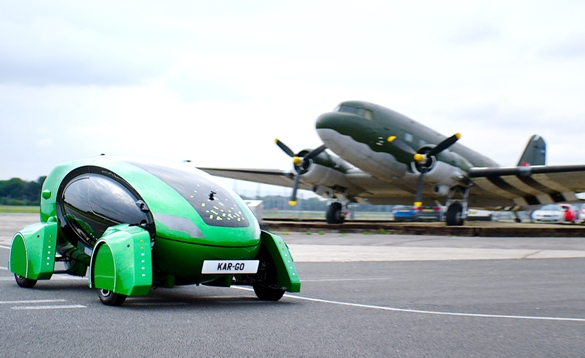RAF Brize Norton is testing the use of an autonomous vehicle for moving goods around the base
Academy of Robotics and the Royal Air Force have deployed autonomous vehicles on an airbase as part of the RAF’s Astra campaign to deliver next generation Air Force capability. This trial is the first time that autonomous vehicles have been deployed on a UK airbase by the RAF.
The trial sees the “Kar-go” Delivery Bot making deliveries of tools, equipment and supplies to locations within RAF Brize Norton, near Oxford. RAF personnel then go out to meet the vehicle and a hatch is automatically released enabling them to collect the package.
During the trial, the vehicles will perform autonomous and semi-autonomous procedures with a safety team monitoring from a mobile command hub. This unique remote command hub is a secure mobile unit, which can oversee all aspects of the vehicles’ operations. From this facility, the team are also able to take control of the vehicle remotely if necessary.
Currently, only trained and authorised personnel can move goods around an airbase, but the use of secure, autonomous vehicles could offer valuable support to professional personnel, freeing up their time to focus on the core roles they were trained for. As the vehicles are electric, the technology also opens up opportunities to reduce harmful emissions, helping the RAF towards its mission to achieve net zero by 2040.
Part-funded by the RAF’s Astra programme, with British start-up Academy of Robotics matching the investment, the trial is the first stage of understanding and investigating the potential to use autonomous delivery vehicles to support the work of RAF personnel.
According to Squadron Leader Tony Seston, RAF Engineer and Astra ambassador, bringing self-driving technology onto a base offers many advantages and could ultimately lead to fleets of autonomous vehicles with different autonomy levels delivering supplies, spares, tools, food and also providing airfield services such as aircraft fuelling, runway sweeping and snow and ice clearance.
“We see this trial as our first steps into understanding how we can deliver this vision safely,” he says.
Whilst extensive pre-scanning and data capture is typical to train autonomous vehicles on a particular route to teach it how to perceive the different features of that route, due to security constraints, the team have had to invent a proprietary system to minimise data capture and enable the vehicle to navigate safely without this training. Furthermore, the team has had to address some new challenges unique to driving on an airfield and teach the AI to learn new behaviours like stopping at green lights on an airfield.
According to William Sachiti, CEO and Founder of Academy of Robotics, moving goods securely around a site is a major challenge for almost all large organisations and although everything has been optimised to be able to do trials like this, every site has its own nuances and challenges.
“The fact that we have designed and built every aspect of the self-driving system has been a huge benefit here giving us complete control and making it much easier to adapt it to the specific integration challenges of the environment we are operating in,” he says.
The trial represents the culmination of months of close collaboration and planning with the RAF and following the first trial, the RAF will review the findings carefully and look at how it can be scaled effectively as part of their continued commitment to bringing innovation into the RAF.
- UK manufacturing steps up to COVID-19 crisis - April 2, 2020
- Clustering Innovation - March 12, 2020
- A Global Monitor - March 6, 2020

